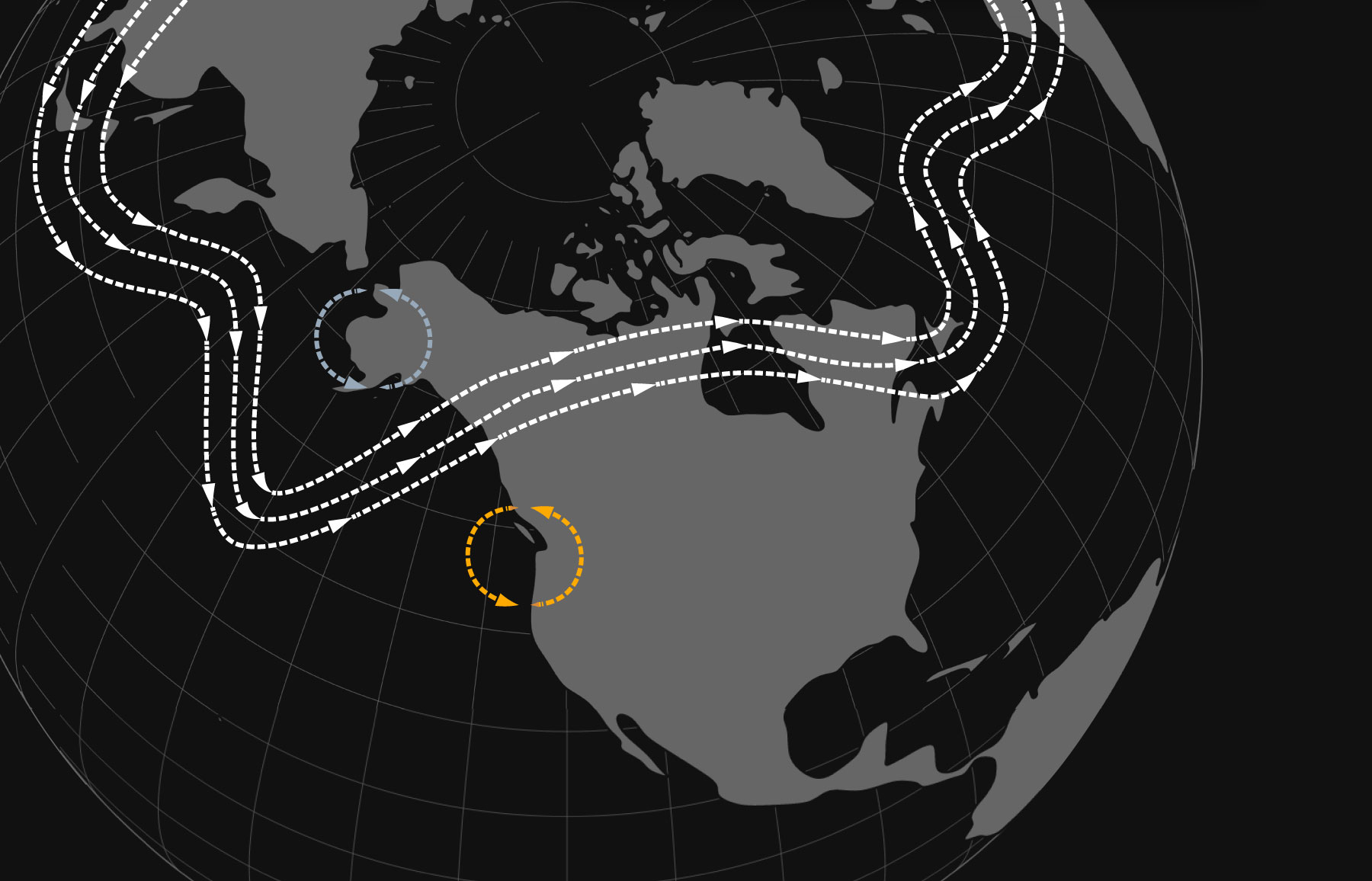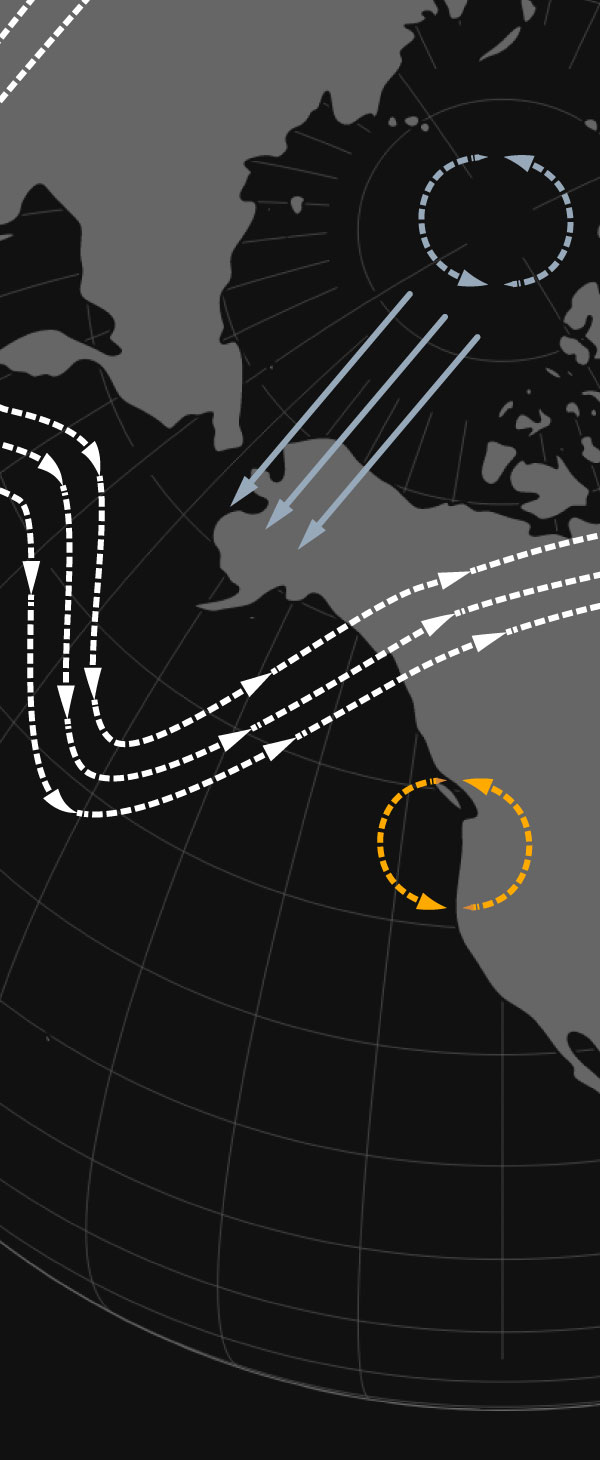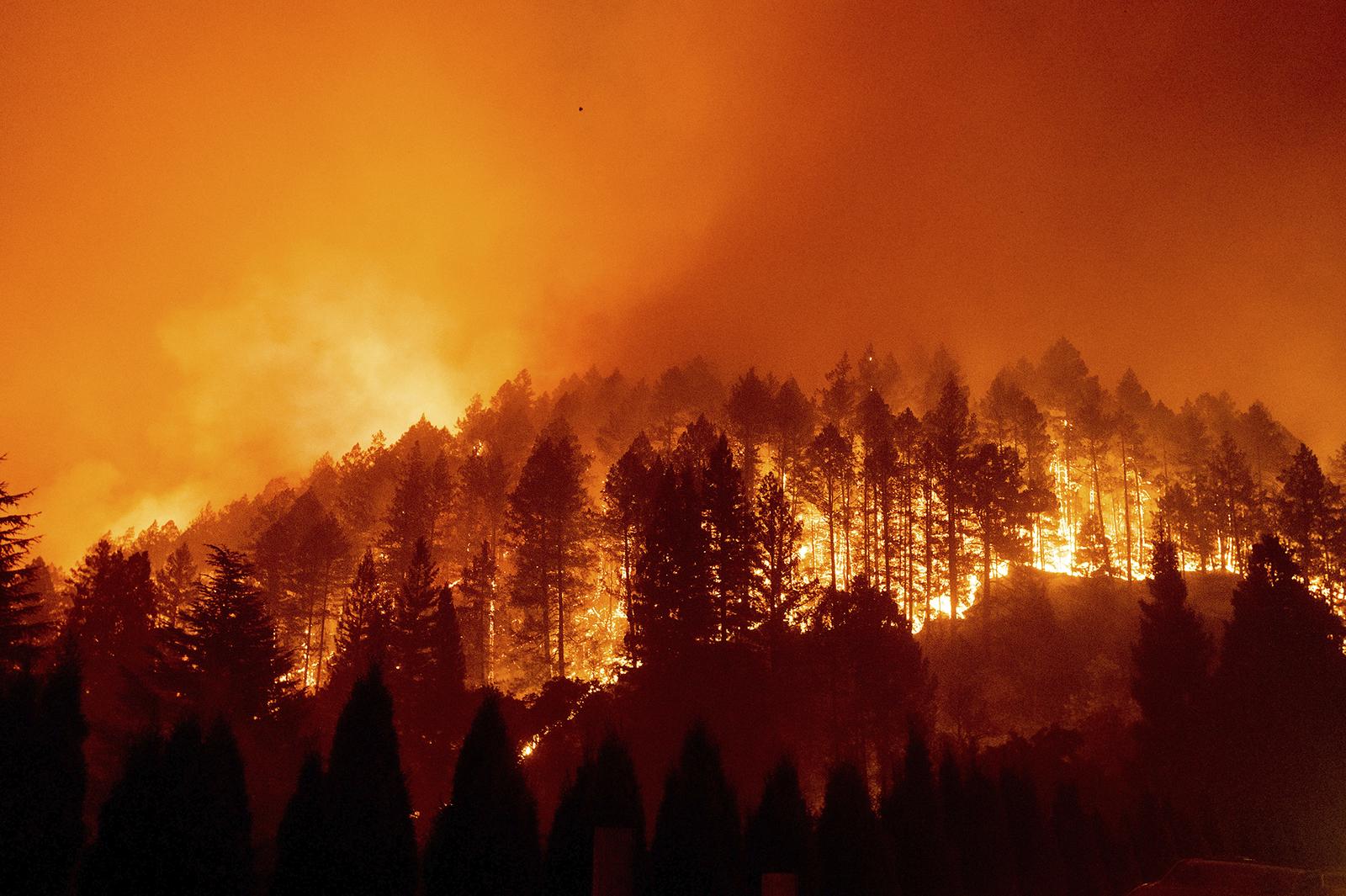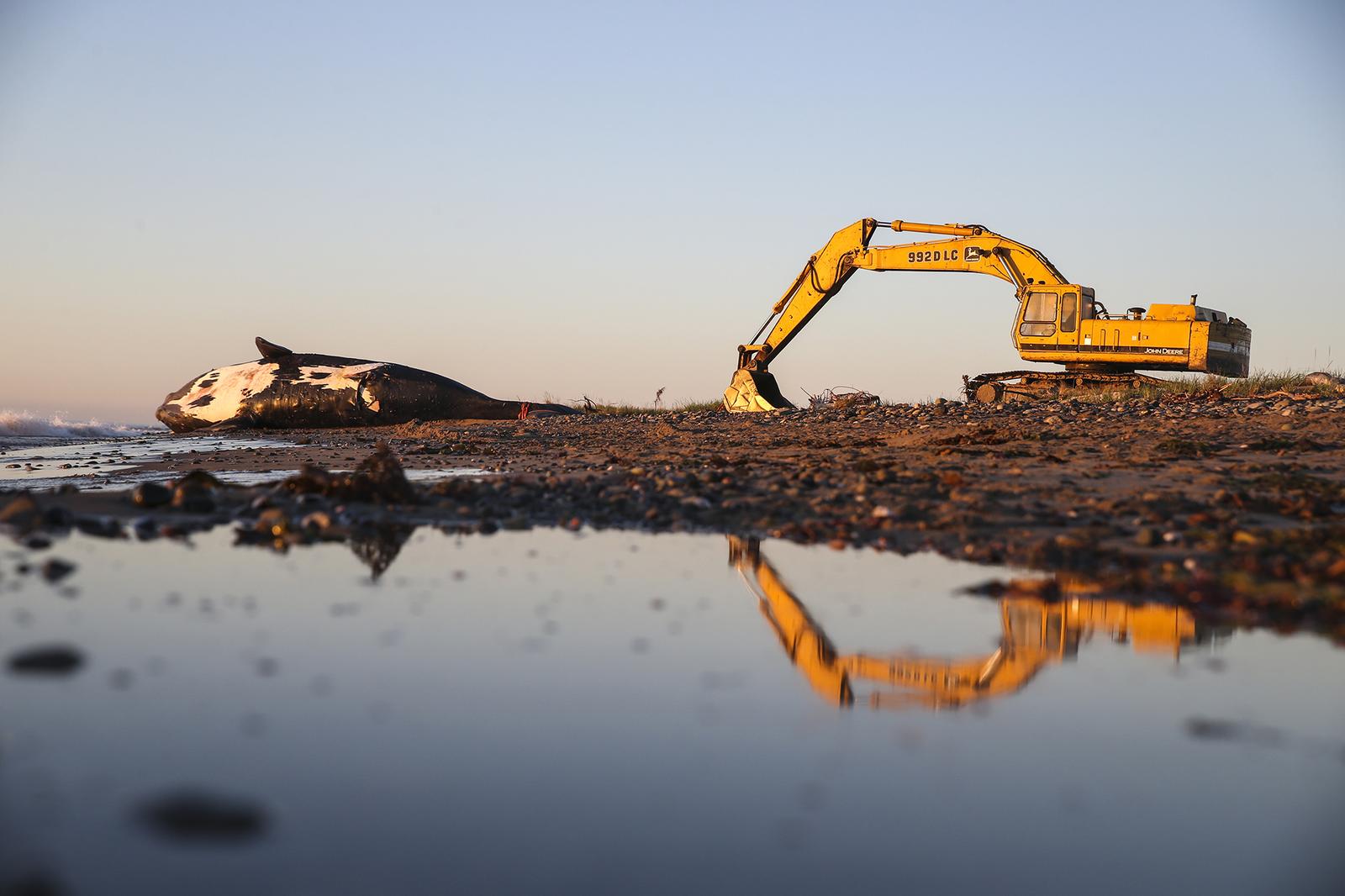Destructive wildfires in the Western U.S.
A $34 billion Texas construction project.
Endangered whales disappearing.
And a Himalayan valley.
These are all connected by melting ice.
Beyond the poles: How melting ice affects everyone
The planet’s massive ice sheets are melting as temperatures rise. Scientists are finding that melt is having surprising and far-reaching effects.
Reporting by Rebecca Hersher, Ryan Kellman and Lauren Sommer
Two-thirds of the planet’s fresh water is frozen.
Most people live far from the glaciers and ice caps that hold it. But as the climate gets hotter, the ice is melting.
That’s setting off a cascade of changes that reach far across the globe.
Can you guess how disappearing ice is linked to these four impacts?
Question 1 (of 4)

Wildfires in the Western U.S. have destroyed tens of thousands of homes in recent years. Some were fueled by hot, dry weather that made fire conditions even more extreme.
Could those weather patterns be linked to:
Sea ice is disappearing in the Arctic Ocean.
That ice normally reflects the sun’s rays with its bright surface. When there’s less ice, the sunlight hits the ocean instead, heating it up.

Low
Jet stream
High

Low
Jet stream
High

Low
Jet stream
High
A warmer ocean heats the air above it, changing the weather patterns. That force can be so powerful, it moves the jet stream that flows across North America.
That can lead to hot, dry weather sitting on top of the Western U.S. during the fall.
 Noah Berger/AP
Noah Berger/AP
Arid conditions have helped fuel some of the most damaging wildfires in recent years. The dry air bakes vegetation, making the risk even more extreme.
Scientists believe that as Arctic ice keeps shrinking, the West Coast could see more of this “fire weather.”
Question 2 (of 4)

Coastal Texas is experiencing some of the fastest sea level rise in the world, threatening millions of people with catastrophic flooding.
Melting ice in which location is most responsible for future sea level rise on the Texas coast?
 Icefin/ITGC/Schmidt
Icefin/ITGC/Schmidt
The West Antarctic ice sheet is huge — it contains enough water to raise global sea levels by more than 10 feet.
As Earth heats up, melting at the bottom of the globe will accelerate, and Antarctic ice will become the biggest source of extra water along much of the U.S. coastline.
 Jeremy Harbeck/NASA
Jeremy Harbeck/NASA
And here’s something surprising:
Sea level rise isn’t like filling a bathtub, with the water rising equally everywhere.
It’s way more complicated. When ice melts, different places experience very different amounts of sea level rise.
And Antarctica has a special relationship with the U.S.
Melting ice in West Antarctica disproportionately affects Texas, because it could disrupt a major ocean current in the Atlantic.
Research suggests that all the meltwater pouring off West Antarctica could cause that current to slow down and spread out later this century, pushing even more water toward the Gulf of Mexico.
That puts Texas in the crosshairs.
Question 3 (of 4)

Endangered right whales have been dying in alarming numbers in the North Atlantic Ocean, some hit by ships in areas where they’ve rarely been seen before.
Could this be connected to:
As Greenland’s massive ice sheet melts, fresh water is pouring into the Atlantic Ocean.
That’s where it meets up with a crucial ocean current. But the fresh water could be interfering with it, causing it to slow down.
A shift in that current is already causing water in the Gulf of Maine to heat up faster than 97% of the global ocean.
The main food for right whales, a tiny plankton, can’t handle warmer temperatures and is disappearing from there.
Sea surface temperature change
Colors show the difference between temperatures in August 2022, compared with the historical average from 1985-1993.
-5
-4
-3
-2
-1
0
+1
+2
+3
+4
+5
+6
+7
+8° C
 Nathan Klima for The Boston Globe via Getty Images
Nathan Klima for The Boston Globe via Getty Images
Many right whales are now swimming hundreds of miles farther to Canada to feed.
But showing up in new waters is risky. More than 20 whales have been killed there, many by ships or by fishing gear.
Question 4 (of 4)

In Nepal, residents of the Rolwaling Valley are worried about an extreme flood that could wipe out entire towns and endanger the lives and livelihoods of thousands of people.
Is this problem connected to:

Glacier
Lake
Natural dam

Glacier
Lake
Natural dam

Glacier
Lake
Natural dam
Climate change is causing mountain glaciers to melt extremely quickly around the world.
As the glaciers shrink, they often leave behind unstable lakes. The water is only held back by natural dams — piles of rocks and leftover ice.
If a glacial lake bursts, it can cause a deadly flash flood. Entire towns have been swept away.
More than 15 million people around the world are threatened by flooding from glacial lakes.
This lake in Nepal, called Tsho Rolpa, is one of hundreds of lakes that pose a critical risk.
What is it like to live downstream? And can scientists warn people when a flood is imminent?
Knowing how fast the planet’s ice will melt is crucial for adapting to a hotter planet.
Predicting that is no simple task. Glaciers are not like ice cubes in the sun, gently liquifying. They’re dynamic, sometimes-violent places where collapse can happen rapidly.
Scientists are racing to measure that melt, as well as trying to understand the wildly complex ways that ice is connected to every continent.
 Ryan Kellman/NPR
Ryan Kellman/NPR
These questions, on the cutting edge of science, are ultimately tied to what will happen to people around the world.
The shape of coastlines, the weather and temperature, the survival of communities — all are tied to ice.
 Ryan Kellman/NPR
Ryan Kellman/NPR
And humans still have the power to slow the pace of the melt.
“We are 110% not too late. If we take strong action to reduce climate change and to rein in greenhouse gases, we can preserve the vast majority. We will see retreat, but most of that ice we could expect to continue to be there for thousands of years.”
— Twila Moon, deputy lead scientist at the National Snow and Ice Data Center